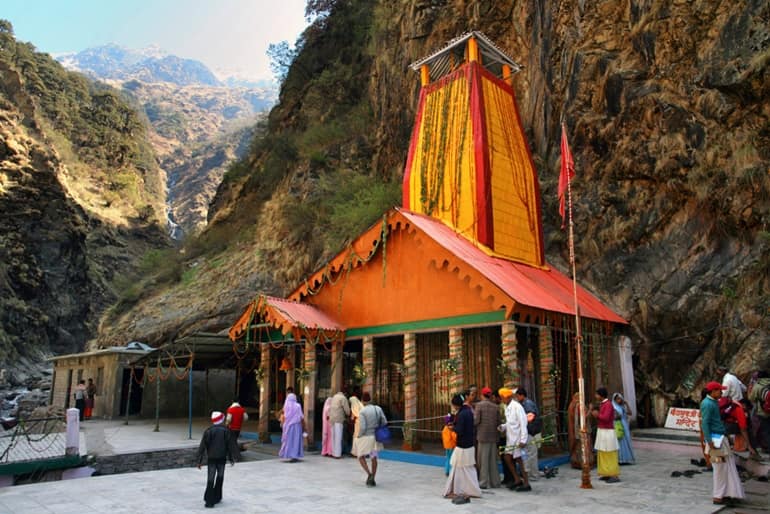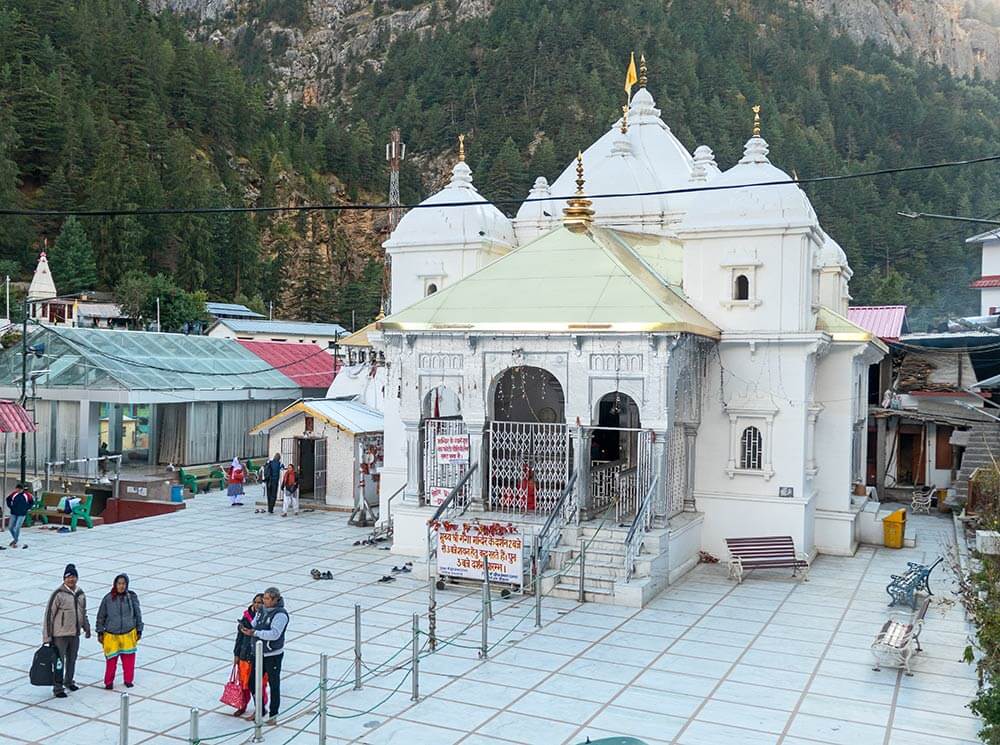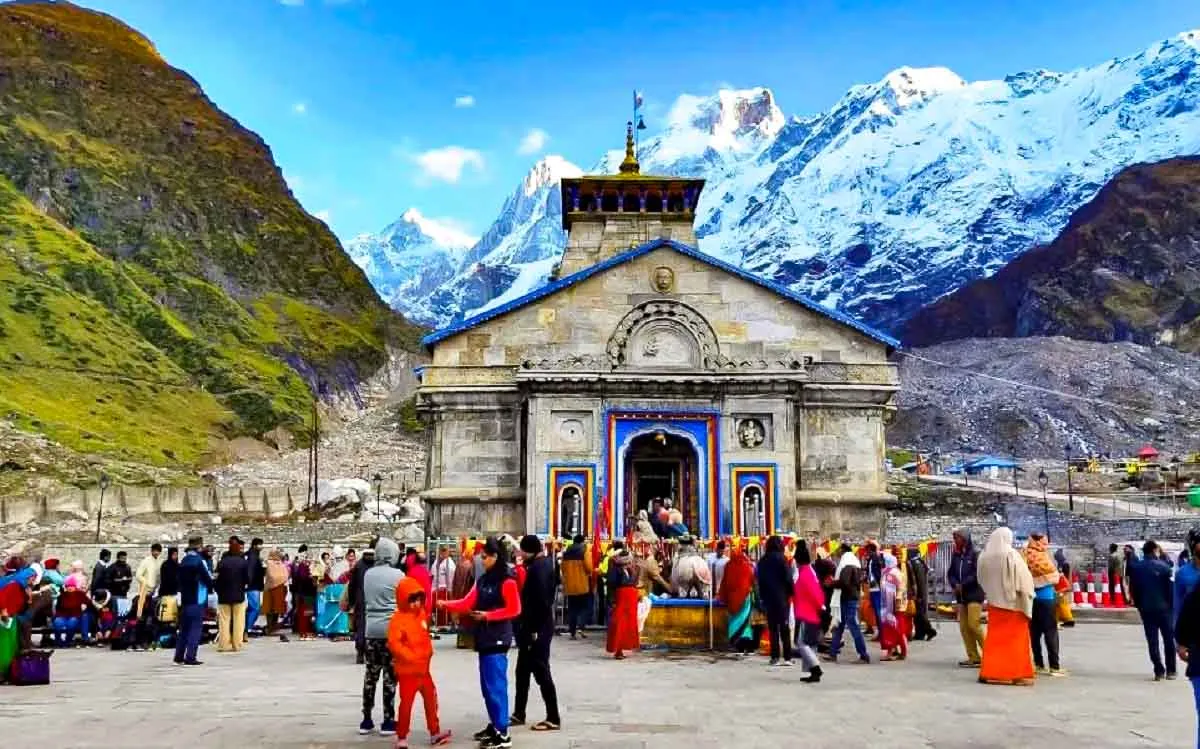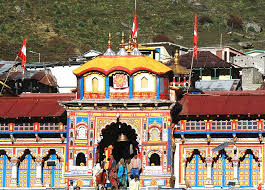Char Dham Yatra Tour Packages 2023 – Chardham Yatra Travel Guide 2023
Char Dham Yatra, also known as Chota Char Dham Yatra, is a pilgrimage tour in the Indian state of Uttarakhand, which involves visiting four sacred Hindu shrines nestled in the Himalayas. The four shrines, collectively referred to as Char Dham, are Yamunotri, Gangotri, Kedarnath, and Badrinath, and are considered highly revered by Hindus.
Here’s some important information about Char Dham Yatra:
Yamunotri: Located in the western Himalayas, Yamunotri is the source of the Yamuna River. The main attraction is the Yamunotri temple, dedicated to the goddess Yamuna. The trek to Yamunotri involves a 6 km trek from Janki Chatti, which is the base camp.
Yamunotri is a sacred pilgrimage site located in the state of Uttarakhand in northern India. It is one of the four shrines of the Char Dham Yatra, and is considered to be the source of the Yamuna River, one of the major rivers in India. Yamunotri is nestled in the western Himalayas, and the main attraction is the Yamunotri temple, which is dedicated to the goddess Yamuna.

Here’s some important information about Yamunotri:
Location: Yamunotri is located in the Uttarkashi district of Uttarakhand, India. It is situated at an altitude of about 3,293 meters (10,804 feet) above sea level in the Garhwal region of the Himalayas.
Accessibility: Yamunotri is not directly accessible by road, and the last motorable point is the town of Hanuman Chatti, which is about 13 kilometers (8 miles) from Yamunotri. From Hanuman Chatti, pilgrims have to trek for about 6 kilometers (3.7 miles) to reach the Yamunotri temple. Ponies and palanquins are also available for those who may find it difficult to trek.
Yamunotri Temple: The Yamunotri temple is an ancient shrine dedicated to the goddess Yamuna. It is believed to have been built in the 19th century by the king of Tehri, Raja Pratap Shah. The temple is made of stone and wood, and its main deity is a black marble idol of the goddess Yamuna. The temple is open from May to November, and it remains closed during the winter months due to heavy snowfall.
Hot Springs: Near the Yamunotri temple, there are hot springs known as Surya Kund and Gauri Kund. Surya Kund is a hot water spring where pilgrims cook rice and potatoes to offer as prasad (holy food) at the temple. Gauri Kund is a thermal spring that is believed to be the source of the Yamuna River.
Trekking: The trek to Yamunotri is considered moderately difficult, and it involves traversing through a scenic trail with breathtaking views of the Himalayas. The trek passes through lush forests, rocky terrains, and scenic meadows, offering a rewarding experience for nature lovers and adventure enthusiasts.
Weather: The weather in Yamunotri can be highly unpredictable, with temperatures ranging from freezing to moderately cool throughout the year. The summer months from May to June are relatively pleasant, with daytime temperatures ranging from 10 to 20 degrees Celsius (50 to 68 degrees Fahrenheit). However, temperatures can drop to sub-zero levels during the winter months from November to April, and the region receives heavy snowfall during this time.
Yamunotri is not just a pilgrimage site, but also a scenic destination with its natural beauty and serene surroundings. It is a place of spiritual significance for Hindus, and pilgrims visit Yamunotri to seek blessings and offer prayers to the goddess Yamuna. It is important to be well-prepared for the trek and to respect the local culture and environment while visiting Yamunotri.
Gangotri : Gangotri is the origin of the sacred river Ganges and is located in the Uttarkashi district of Uttarakhand. The Gangotri temple, dedicated to the goddess Ganga, is the main pilgrimage site here. Gangotri is approximately 21 km from Harsil, which serves as the base camp.
Gangotri is a sacred pilgrimage site located in the state of Uttarakhand in northern India. It is one of the four shrines of the Char Dham Yatra, and is considered to be the origin of the holy river Ganges, one of the major rivers in India. Gangotri is nestled in the western Himalayas, and the main attraction is the Gangotri temple, which is dedicated to the goddess Ganga.

Here’s some important information about Gangotri:
Location: Gangotri is located in the Uttarkashi district of Uttarakhand, India. It is situated at an altitude of about 3,100 meters (10,200 feet) above sea level in the Garhwal region of the Himalayas.
Accessibility: Gangotri is well-connected by road, and it is accessible by motorable roads from Rishikesh, which is about 250 kilometers (155 miles) away. The temple is about 19 kilometers (12 miles) from the town of Gangotri, and pilgrims can reach the temple by hiring taxis or using public transport.
Gangotri Temple: The Gangotri temple is an ancient shrine dedicated to the goddess Ganga. It is believed to have been built by the Gorkha general Amar Singh Thapa in the 18th century. The temple is made of white granite and is located on the right bank of the Bhagirathi River. The main deity is a silver idol of the goddess Ganga. The temple is open from May to November, and it remains closed during the winter months due to heavy snowfall.
Ganges River: Gangotri is considered to be the origin of the holy river Ganges, which is one of the most sacred rivers in India. The river is believed to have descended on Earth to cleanse the sins of mankind, and it holds immense religious significance for Hindus.
Gauri Kund: Gauri Kund is a hot water spring located near the Gangotri temple. It is believed to be the spot where Goddess Parvati performed penance to win Lord Shiva’s affection. Pilgrims take a bath in the holy waters of Gauri Kund before visiting the Gangotri temple.
Trekking: Gangotri is also a popular destination for trekkers and nature lovers. The region offers several trekking routes that take you through picturesque landscapes, including the Gangotri Glacier, which is one of the largest glaciers in the Indian Himalayas.
Weather: The weather in Gangotri can be challenging, with temperatures ranging from cool to cold throughout the year. The summer months from May to June are relatively pleasant, with daytime temperatures ranging from 10 to 20 degrees Celsius (50 to 68 degrees Fahrenheit). However, temperatures can drop to sub-zero levels during the winter months from November to April, and the region receives heavy snowfall during this time.
Gangotri is not just a pilgrimage site, but also a destination of natural beauty and serene surroundings. It is a place of immense religious significance for Hindus, and pilgrims visit Gangotri to seek blessings and offer prayers to the goddess Ganga. It is important to be well-prepared for the weather conditions and to respect the local culture and environment while visiting Gangotri.
Kedarnath: Kedarnath is one of the twelve Jyotirlingas (divine representations of Lord Shiva) and is situated in the Rudraprayag district of Uttarakhand. The Kedarnath temple, located at an altitude of 3,583 meters, is the main shrine here. The trek to Kedarnath involves a 16 km trek from Gaurikund, which is the base camp.
Kedarnath is a sacred pilgrimage site located in the state of Uttarakhand in northern India. It is one of the four shrines of the Char Dham Yatra, and is dedicated to Lord Shiva. Situated in the Garhwal region of the Himalayas, at an altitude of about 3,583 meters (11,755 feet) above sea level, Kedarnath is known for its stunning natural beauty and spiritual significance.

Here’s some important information about Kedarnath yatra:
Location: Kedarnath is located in the Rudraprayag district of Uttarakhand, India. It is situated on the banks of the Mandakini River, a tributary of the Alaknanda River. The town of Sonprayag is the last road-head before Kedarnath, and from there, it is accessible only by foot or by hiring mules, ponies, or palanquins.
Kedarnath Temple: The Kedarnath temple is an ancient shrine dedicated to Lord Shiva. It is believed to have been built by the Pandavas, the heroes of the Hindu epic Mahabharata, and is considered one of the holiest pilgrimage sites for Hindus. The temple is made of large stone slabs and is located in a picturesque setting amidst snow-capped mountains and glaciers. The main deity is a conical-shaped lingam (representation of Lord Shiva) that is worshipped as Kedarnath.
Accessibility: Kedarnath is accessible by trekking from Sonprayag, which is about 20 kilometers (12 miles) away, or by hiring mules, ponies, or palanquins. The trek to Kedarnath involves a steep ascent and can be physically demanding, but the scenic beauty of the surrounding mountains and valleys makes it a memorable experience for pilgrims and trekkers alike.
Weather: The weather in Kedarnath is cold throughout the year, with temperatures ranging from sub-zero levels in winter to mild during the summer months. The summer season from May to June is the best time to visit Kedarnath, with daytime temperatures ranging from 5 to 15 degrees Celsius (41 to 59 degrees Fahrenheit). The monsoon season from July to September can be challenging due to heavy rainfall, and the region is prone to landslides and floods during this time.
Pilgrimage Season: Kedarnath is open for pilgrims from April/May to October/November, depending on weather conditions. The temple remains closed during the winter months due to heavy snowfall, and the idol of Lord Kedarnath is shifted to Ukhimath, where it is worshipped during the winter season.
Accommodation: Kedarnath offers limited accommodation options, including guesthouses and ashrams (spiritual retreats) run by the temple authorities and local organizations. Pilgrims are advised to carry warm clothing, rain gear, and other essentials as the weather can be unpredictable in the region.
Trekking and Nearby Attractions: Kedarnath is also a popular destination for trekkers, with several nearby attractions to explore. The Vasuki Tal, Chorabari Tal (Gandhi Sarovar), and Shankaracharya Samadhi are some of the nearby places that can be visited during the pilgrimage. The trek to Kedarnath also passes through beautiful meadows, dense forests, and pristine glaciers, offering breathtaking views of the Himalayan landscapes.
Kedarnath is not just a pilgrimage site, but also a place of natural beauty and serenity. It is considered a sacred destination for Hindus, and pilgrims visit Kedarnath to seek blessings and offer prayers to Lord Shiva. It
Badrinath: Badrinath is a famous pilgrimage site dedicated to Lord Vishnu and is located in the Chamoli district of Uttarakhand. The Badrinath temple, situated at an altitude of 3,133 meters, is the main attraction. The base camp for Badrinath is Mana, which is the last village before the Indo-China border.
Badrinath is a famous pilgrimage site located in the Chamoli district of Uttarakhand, India. It is one of the four shrines of the Char Dham Yatra, and is dedicated to Lord Vishnu. Situated in the Garhwal region of the Himalayas, at an altitude of about 3,300 meters (10,827 feet) above sea level, Badrinath is known for its spiritual significance, stunning natural beauty, and rich cultural heritage.
Here’s some important information about Badrinath:
Location: Badrinath is located in the Chamoli district of Uttarakhand, India. It is situated on the banks of the Alaknanda River, a major tributary of the Ganges River. The town of Joshimath is the base point for Badrinath, and from there, it is accessible by road.
Badrinath Temple: The Badrinath temple is an ancient shrine dedicated to Lord Vishnu. It is one of the holiest pilgrimage sites for Hindus and is believed to be one of the Char Dham shrines established by Adi Shankaracharya, a famous Hindu saint and philosopher. The temple is made of stone and is located in a picturesque setting surrounded by snow-capped mountains and dense forests. The main deity is a black stone idol of Lord Vishnu in a meditative posture, worshipped as Badrinath.
Accessibility: Badrinath is accessible by road from Joshimath, which is about 45 kilometers (28 miles) away. The road to Badrinath is open from May to November, depending on weather conditions. During the winter months, the region receives heavy snowfall, and the temple remains closed. The idol of Lord Badrinath is shifted to Joshimath, where it is worshipped during the winter season.

Weather: The weather in Badrinath is cold throughout the year, with temperatures ranging from sub-zero levels in winter to mild during the summer months. The summer season from May to June is the best time to visit Badrinath, with daytime temperatures ranging from 5 to 15 degrees Celsius (41 to 59 degrees Fahrenheit). The monsoon season from July to September can be challenging due to heavy rainfall, and the region is prone to landslides and floods during this time.
Pilgrimage Season: Badrinath is open for pilgrims from April/May to October/November, depending on weather conditions. The temple remains closed during the winter months due to heavy snowfall, and the idol of Lord Badrinath is shifted to Joshimath, where it is worshipped during the winter season.
Accommodation: Badrinath offers limited accommodation options, including guesthouses and ashrams (spiritual retreats) run by the temple authorities and local organizations. Pilgrims are advised to carry warm clothing, rain gear, and other essentials as the weather can be unpredictable in the region.
Trekking and Nearby Attractions: Badrinath is also a popular destination for trekkers, with several nearby attractions to explore. The Valley of Flowers National Park, Hemkund Sahib, and Mana Village, the last village on the Indo-Tibetan border, are some of the nearby places that can be visited during the pilgrimage. The trek to Badrinath also passes through beautiful meadows, glaciers, and rivers, offering breathtaking views of the Himalayan landscapes.
Badrinath is not just a pilgrimage site, but also a place of natural beauty and cultural significance. It is considered a sacred destination for Hindus, and pilgrims visit Badrinath to seek blessings and offer prayers to Lord Vishnu. The serene surroundings, pristine landscapes, and cultural heritage make Badrinath a unique and enriching experience for pilgrims and
Char Dham Yatra is considered a spiritually uplifting journey for Hindus, and pilgrims from all over India and abroad visit these shrines to seek blessings and offer prayers. The yatra usually takes place during the summer months from April/May to November, as the region remains inaccessible during the winter months due to heavy snowfall. Pilgrims can choose to travel by road or on foot, depending on their preferences and fitness levels. It is important to be well-prepared for the challenging terrain and varying weather conditions during the yatra, and to respect the local culture and traditions.
When Char Dham yatra will start in 2023?
Badrinath Dham: The Badrinath Temple is a Shrine of Lord Vishnu, and it is part of Chota Char Dham and 4 Dham of India.
Badrinath temple remains closed for winter and open again in April-May. This Year opening date of Badrinath Temple for 2023 has been announced on Basant Panchami by Raj Purohit.
Badrinath Open Date: 27 April 2023 at 07:10 am / Badrinath Close Date: 21 Nov 2023 (Tentative)
Kedarnath Dham: The Kedarnath Temple dedicated to Lord Shiva is a popular Hindu shrine and pilgrimage, attracting devotees from all over the world.
Kedarnath temple remains closed for winter and open again in April-May. This Year opening date of Kedarnath Temple for 2023 has been announced on the Shiva Ratri.
Kedarnath Open Date: 25 April 2023 at 6:20 AM / Kedarnath Close Date: 14 Nov 2023 – Bhai Dooj (Tentative)
Gangotri Dham: The Gangotri Temple is dedicated to Goddess Ganga. Gangotri is the source of Holy river Ganga.
Gangotri temple remains closed for winter and open again in April-May. This Year Gangotri Shrine opening date 2023 has been announced and open on the auspicious day of Akshaya Tritiya
Gangotri Open Date: 22 April 2023 / Gangotri Close Date: 13 Nov 2023 (Next Day of Diwali)
Yamunotri Dham: The Yamunotri Temple is dedicated Goddess Yamuna. Yamunotri is a place to seek the blessings of Yamuna and save themselves from the agony of death, as Devi Yamuna is sister of Yama, the God of Death.
The Yamunotri temple remains closed for winter and open again in April-May. This Year Yamunotri Temple opening date 2023 has been announced and opens on the auspicious day of Akshaya Tritiya.
Yamunotri Open Date: 22 April 2023 / Yamunotri Close Date: 14 Nov 2023 (Bhai Dooj)
What is the Importance of Char dham for the Hindus?
Char Dham holds immense importance for Hindus as it is considered one of the holiest pilgrimage circuits in India. It is believed that undertaking the Char Dham Yatra is a way to cleanse one’s soul and attain spiritual purification. The Char Dham Yatra is a journey to the four sacred shrines of Yamunotri, Gangotri, Kedarnath, and Badrinath, located in the Uttarakhand state of India.
Here are some key reasons why Char Dham is important for Hindus:
Char Dham is considered to be the abode of Hindu gods and goddesses. Yamunotri is dedicated to Goddess Yamuna, Gangotri to Goddess Ganga, Kedarnath to Lord Shiva, and Badrinath to Lord Vishnu. These shrines are believed to be highly sacred and are considered a vital part of Hindu mythology and religious beliefs.
Pilgrimage and penance: Undertaking the Char Dham Yatra is considered a sacred pilgrimage and an act of penance. It is believed that by visiting these shrines, one can purify their soul, seek blessings, and attain spiritual enlightenment. The challenging journey to these remote locations, often involving treks and difficult terrains, is believed to be a form of penance and devotion to the deities.
Moksha (liberation): It is believed that by undertaking the Char Dham Yatra, one can attain moksha or liberation from the cycle of birth and death. It is considered a way to attain salvation and eternal peace, as it is believed that visiting these shrines and seeking blessings from the deities can cleanse one’s sins and pave the way for spiritual liberation.
Cultural heritage: Char Dham Yatra is not only a religious pilgrimage but also a significant cultural heritage for Hindus. These shrines are deeply ingrained in Hindu traditions, customs, and mythology, and the yatra is an opportunity for devotees to connect with their cultural roots, uphold traditions, and pay homage to the ancient practices of Hinduism.
Social significance: Char Dham Yatra also has social significance as it brings communities, pilgrims, and locals together. The yatra is an occasion for people to come together, share their faith, and participate in various religious and cultural activities. It fosters a sense of community, brotherhood, and social harmony among people from different walks of life, promoting unity and peace.
In summary, Char Dham holds immense importance for Hindus as it is a significant pilgrimage circuit associated with spiritual, cultural, and social significance. It is believed to be a journey of faith, devotion, and purification, and is considered a sacred and revered pilgrimage destination for millions of Hindus from across the world.
Char Dham Yatra Route Map
The Char Dham Yatra route map typically follows the following sequence:
Yamunotri: The first shrine in the Char Dham Yatra is Yamunotri, which is dedicated to Goddess Yamuna. The usual starting point for the yatra is the town of Rishikesh in Uttarakhand. From Rishikesh, you would need to travel to the town of Hanuman Chatti by road, which is approximately 220 kilometers away. From Hanuman Chatti, there is a trek of about 14 kilometers to reach Yamunotri. The trek includes steep trails and can be physically challenging.
Gangotri: After visiting Yamunotri, the next shrine in the Char Dham Yatra is Gangotri, dedicated to Goddess Ganga. From Yamunotri, you would need to travel back to Hanuman Chatti and then drive to the town of Uttarkashi, which is approximately 150 kilometers away. From Uttarkashi, there is a drive of about 100 kilometers to reach Gangotri.
Kedarnath: The third shrine in the Char Dham Yatra is Kedarnath, dedicated to Lord Shiva. From Gangotri, you would need to travel back to Uttarkashi and then drive to the town of Guptkashi, which is approximately 230 kilometers away. From Guptkashi, there is a trek of about 19 kilometers to reach Kedarnath. Alternatively, you can also hire a helicopter service from Guptkashi to Kedarnath, depending on availability and weather conditions.
Badrinath: The final shrine in the Char Dham Yatra is Badrinath, dedicated to Lord Vishnu. From Kedarnath, you would need to trek back to Guptkashi and then drive to the town of Joshimath, which is approximately 175 kilometers away. From Joshimath, there is a drive of about 45 kilometers to reach Badrinath.
After visiting Badrinath, you can follow the same route back to Rishikesh to complete the Char Dham Yatra.
It’s important to note that the road conditions in the region can be challenging, especially during the monsoon season and winter months, and it’s essential to be prepared and take necessary precautions for a safe and successful pilgrimage. It’s also advisable to check the weather conditions, road conditions, and any travel advisories from reliable sources before embarking on the Char Dham Yatra.
Important Cities and towns which comes during Char Dham Yatra
Dehradun – Mussoorie – Chamba – Tehri – Dharasu – Naugaon – Barkot – Sayana Chatti – HanumanChatti – Phoolchatti – Jankichatti – Yamunotri – Uttarkashi – Bhatwari – Gangnani – Harsil – Jangla – Bhaironghati – Gangotri (Gaumukh) – Srinagar – Rudraprayag – Augustmuni – Chandrapuri – Kund – Guptkashi – Phata- Rampur – Sitapur – Sonprayag – Gaurikund – Kedarnath – Ukhimath – Chopta – Gopeshwar – Chamoli – Pipalkoti – Joshimath (Auli) – Govindghat – Badrinath- Nandprayag – Karnprayag – Devprayag – Rishikesh – Haridwar